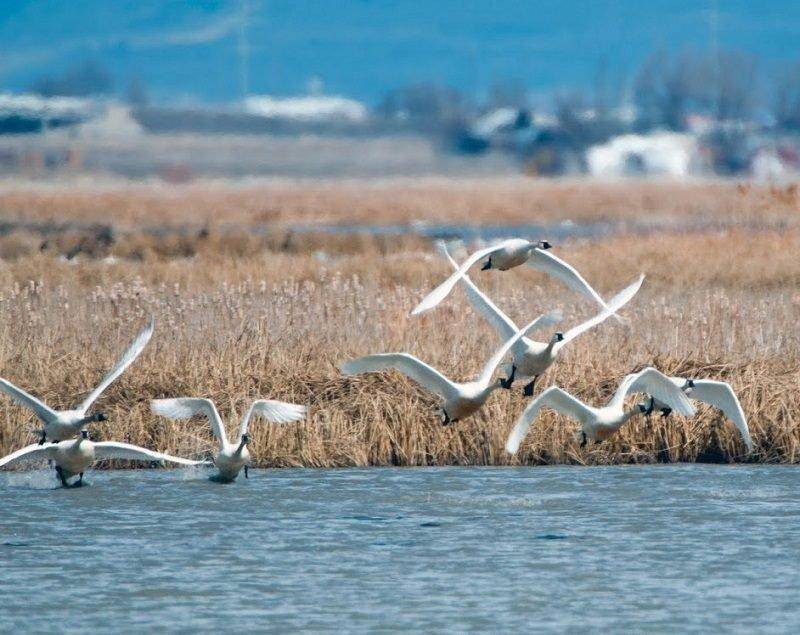More than 4,700 counted on Nov. 1
Tundra swans are flying into northern Utah right now. And thousands more are on their way.
During a Nov. 1 survey flown over marshes on the northeastern shore of Great Salt Lake, biologists with the Division of Wildlife Resources spotted more than 4,700 swans. “Swans are just starting to fly into the marshes,” says Blair Stringham, migratory game bird coordinator for the DWR. “If you’re one of the 2,000 hunters who drew a swan hunting permit in Utah, now is the perfect time to head to the marsh.”
The DWR usually flies its weekly swan surveys on Tuesday mornings. You can keep track of the swans by visiting www.wildlife.utah.gov/waterfowl/swan/swansurvey.php.
Utah’s swan hunting season ends Dec. 11.
Bear River Refuge is a good choice
To protect trumpeter swans, the U.S. Fish and Wildlife Service (USFWS) and the Utah Wildlife Board have closed some areas to swan hunting. The closed area includes all of Utah north of the Bear River Migratory Bird Refuge and north of Forest Street (the road leading from Brigham City to the refuge).
Most of the swans the biologists saw on the morning of Nov. 1 were on the Bear River Duck Club, a private club located next to the refuge. Swans often fly between the club and the refuge, giving public hunters a great chance to take a swan. As more swans fly into the state, the birds will start visiting state waterfowl management areas that are south of the refuge.
If you visit the refuge, please remember that Bear River is a federal refuge. Some of the rules at the refuge are different than rules at areas managed by the state. More information is available on pages 27 and 28 of the 2016 – 2017 Utah Waterfowl Guidebook. You can get the free guidebook at www.wildlife.utah.gov/guidebooks.
Hunting tips
If you drew a swan hunting permit, Stringham encourages you to spend time watching the swans and learning their flight patterns. Tundra swans are very consistent in the times of day they fly and the routes they take.
Ice-up is another thing to watch for. As the water starts to freeze, swans will be in the air more, searching for areas that still have open water.
Three factors—hunting pressure, changes in the weather and the availability of food—can change a swan’s flight pattern, though.
Swan hunting reminders
If you drew a swan permit, please remember the following. These requirements help the DWR and the USFWS obtain an accurate count of the number of trumpeter swans that are accidentally taken by hunters:
– Within 72 hours of taking a swan, you must take your bird or its head to a DWR office, or the Bear River Migratory Bird Refuge, so it can be examined and measured.
– You must complete a harvest questionnaire no later than Jan. 10, 2017. The questionnaire must be completed, even if you don’t hunt swans or take a swan.
You can access the questionnaire online at www.utah-hunt.com/UT_Returncard. You can also complete it by calling 1-800-221-0659.
If you don’t do the items above, you can’t apply for a swan permit in 2017.

